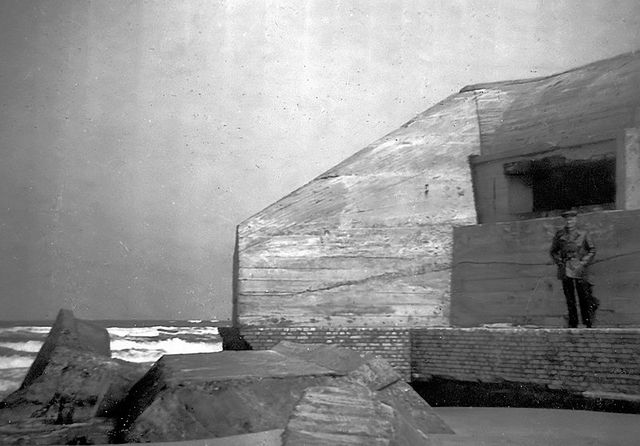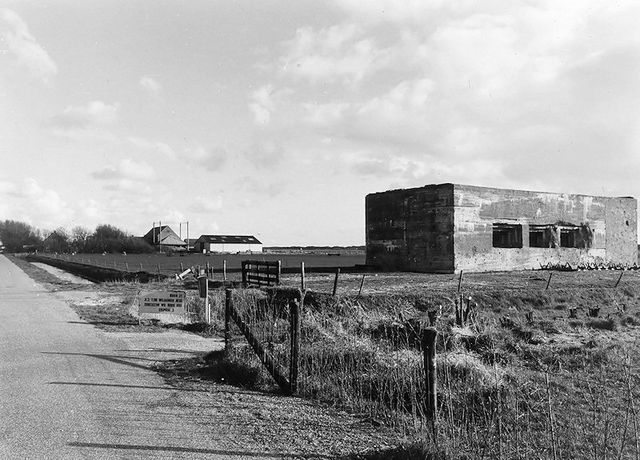Types of bunkers
Construction of the Neue Westwall began in February 1942. Along the coastline, the army regiments built bunkers for coastal and anti-aircraft artillery, fire-control and observation posts, bunkers for close-proximity defence and flanking artillery, ammunition bunkers and crew quarters, but also communication bunkers, radar bunkers and command bunkers. A large number of Tobruks were also built: small bunkers with a ring-shaped opening large enough for one or two people or light artillery, which made them almost invisible to the enemy.
Strategic support points
The Neue Westwall was not constructed as a single, linear defence line. That would have been virtually impossible because the coastline, stretching out over thousands of kilometres, was much too long. The line was made up of a series of fortified strategic support points; most of them around the harbours. Harbour defence had the highest priority and they had to be defended no matter the cost. Without a harbour, the invading forces could not form a bridgehead and would not succeed in their advance, or so people thought. Back then no one knew that this idea would prove to be wrong. It did not become clear until June 1944.
-
Standardisation of the bunker design
Standardisation of the bunker design

-
Various types
Various types


